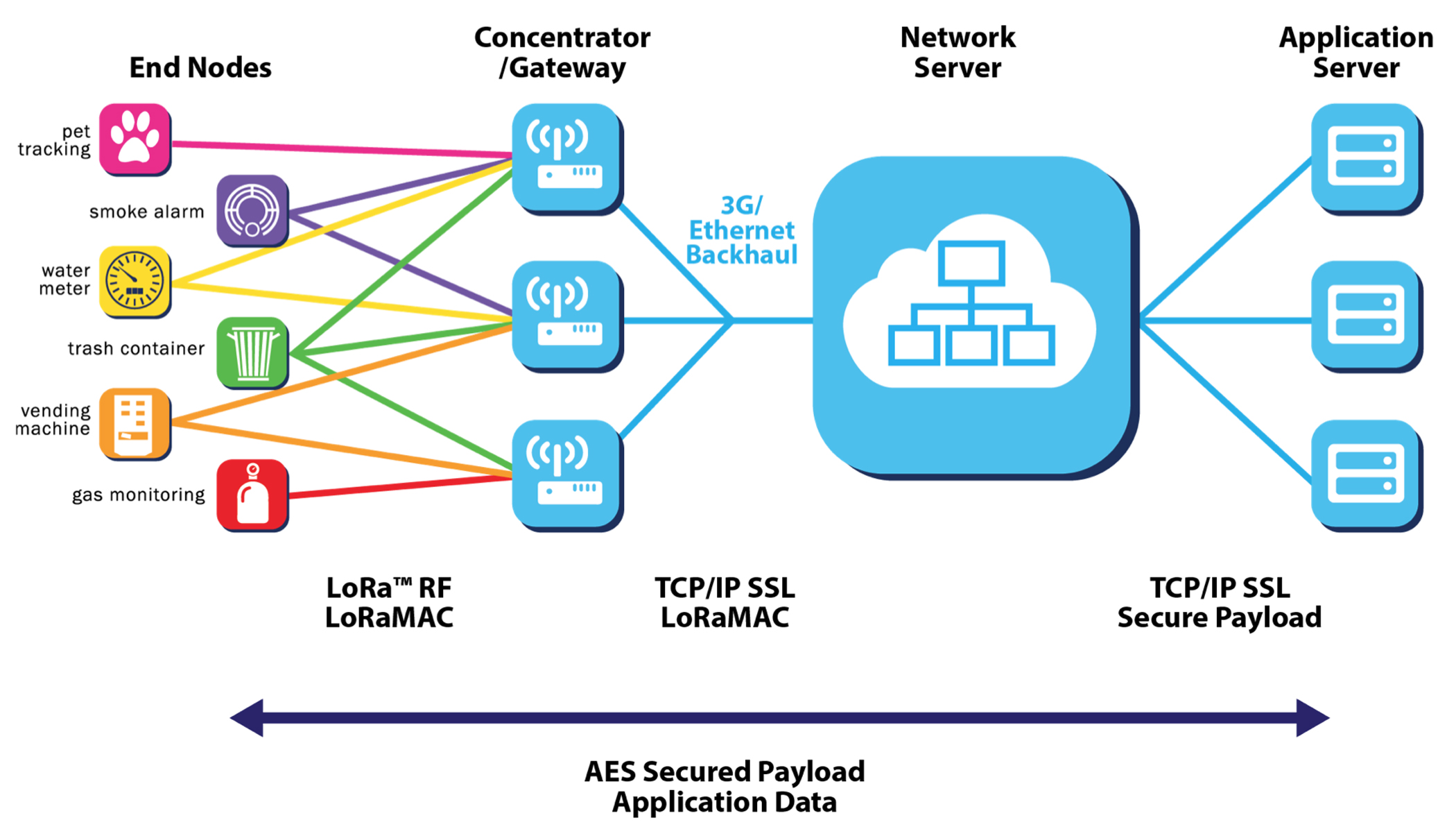
LoRaWAN™ is a Low Power Wide Area Network (LPWAN) protocol that supports low-cost, mobile, and secure bi-directional communication for Internet of Things, smart city, and industrial applications. It is a protocol optimized for operating with low power consumption and also designed to support large networks with millions of connected devices. LoRaWAN features include support for redundant operation, geolocation, low-cost, and low-power applications. Given that security is a fundamental need in all of the aforementioned applications, LoRaWAN protocol uses encrypted communications for secure data transmission.
Based on the above architecture, a LoRaWAN network consists of the following elements:
1) LoRa Nodes
2) Gateways
3) Network Servers
4) Application Servers
LoRa Nodes are the sensors which are installed to various devices and where sensing and control takes place. These nodes are often placed remotely. LoRa Gateways are responsible for the receival of any data transmitted by a node. Upon receival, the gateway transmits all data to a cloud-based network server. Network servers filter all the duplicate packets received from different gateways, perform security checks, send ACKs back to the gateways for communication approval with a LoRa node. Application servers receive all data packages that are intended for them.
With a multitude of IoT vertical applications, LoRa Technology is creating business efficiencies and improving lives around the world. Some of the applications are:
- Smart Agriculture
- Smart Cities
- Smart Environment
- Smart Healthcare
- Smart Homes / buildings
- Smart Industries
- Smart Metering
Request info About Our Services
For more info please download the brochure.
